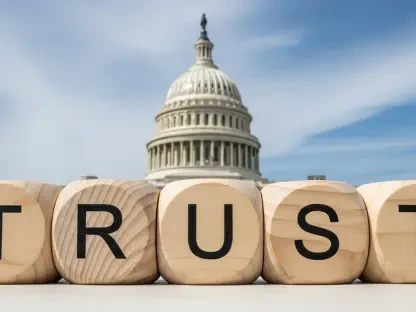As we dive into the pressing issue of government shutdowns, I’m thrilled to sit down with Donald Gainsborough, a political savant and leader in policy and legislation at the helm of Government Curated. With his deep expertise in federal governance, Donald offers unparalleled insight into the Prevent Government Shutdowns Act (H.R. 5130), a bill recently reintroduced on Capitol Hill. Our conversation explores the mechanics of this legislation, its potential to shift the burden of shutdowns from the public to politicians, the financial and personal toll of past budget impasses, and the broader implications for federal spending amidst a staggering national debt. Join us as we unpack these critical topics with a true expert in the field.
Can you walk us through the core purpose of the Prevent Government Shutdowns Act and how it plans to keep the government running during a budget lapse?
Absolutely, Javier. The Prevent Government Shutdowns Act, or H.R. 5130, is designed to stop the chaos of government shutdowns by putting in place an automatic 14-day continuing resolution, or CR, whenever appropriations lapse. This means that even if Congress misses the deadline to pass a budget, federal operations don’t grind to a halt. That 14-day window gives lawmakers a cushion to negotiate and finalize a deal without disrupting essential services or leaving federal workers in the lurch. It’s a practical buffer to ensure continuity while discussions continue.
How do you see this legislation shifting the burden of a shutdown from everyday Americans to the politicians who are responsible for the budget?
The idea here is to flip the script. Right now, when Congress fails to pass a budget on time, it’s the public—taxpayers, seniors, military personnel, and federal workers—who bear the brunt. They face delayed services, missed paychecks, or uncertainty about benefits. This bill says that shouldn’t happen. Instead, it puts the pressure on lawmakers by imposing restrictions like limiting recesses and travel until the job is done. It’s about accountability—making sure elected officials feel the heat of their inaction rather than passing that stress onto the people they serve.
What are some of the specific restrictions this bill places on Congress during a budget lapse, and how do they encourage a resolution?
The bill gets creative in holding Congress accountable. One key measure is a 23-hour cap on motions to recess or adjourn, which essentially forces lawmakers to stay at the table and work through the deadlock. There’s also a restriction on official travel for members of Congress and their staff, allowing only a single return flight to D.C. if they’re away. On top of that, it bars the use of campaign funds for official business or travel during these lapses. Together, these rules create a sense of urgency—lawmakers can’t just walk away or distract themselves with other priorities; they’re stuck until the budget is resolved.
This isn’t the first time this kind of legislation has been proposed. Can you shed light on why earlier attempts in 2019 and 2023 didn’t succeed?
You’re right, Javier, this concept has been floating around since at least 2019, following that grueling 35-day shutdown, and again in 2023. The 2019 version came right after a historic budget impasse, but it struggled to gain traction amid partisan divides and competing priorities. By 2023, the Senate version got close as an amendment to a spending package but fell short of the 60 votes needed to advance. The core issue often comes down to political will—some lawmakers see shutdowns as leverage in negotiations, and others worry about ceding control with automatic CRs. It’s a tough sell when trust between parties is low or when bigger fiscal battles overshadow the issue.
Speaking of that 35-day shutdown in 2019, can you elaborate on the financial toll these impasses take on both the government and its workers?
The numbers are staggering. For the 2019 shutdown, estimates pegged the cost of back pay for furloughed workers at around $3 billion, with another $6 billion tied to unpaid work by employees who kept showing up. That’s a massive hit to the federal budget, not to mention the ripple effects on the economy from delayed contracts and reduced consumer spending. But beyond the dollars, the personal impact is heartbreaking. Federal workers often face real financial hardship—missing mortgage payments, racking up debt, or struggling to buy groceries. Even with guaranteed back pay now, the interim uncertainty can be devastating for families living paycheck to paycheck.
With the national debt surpassing $37 trillion, how does this bill connect to broader concerns about federal spending and fiscal responsibility?
The connection is critical. Shutdowns don’t just cost money in the short term; they exacerbate our long-term debt problem by disrupting fiscal planning and often leading to rushed, inefficient spending decisions once resolved. This bill aims to keep Congress focused on the budget process, avoiding those costly disruptions. More broadly, it’s a step toward forcing lawmakers to confront hard choices about spending and debt rather than kicking the can down the road with shutdown threats. Stability in budgeting is essential when we’re dealing with a debt burden of this magnitude.
Looking ahead, what’s your forecast for the future of this legislation and the effort to end government shutdowns?
I’m cautiously optimistic, Javier. The reintroduction of H.R. 5130 shows persistent bipartisan concern about shutdowns, especially with another fiscal deadline looming. But the road ahead is tricky—political consensus is hard to come by, and competing proposals or partisan posturing could stall progress again. My forecast hinges on whether enough lawmakers prioritize the public’s well-being over using shutdowns as a bargaining chip. If they can rally around the idea that accountability should rest with Congress, not families and workers, we might finally see a breakthrough. Time will tell if this fall’s budget talks provide the needed momentum.









